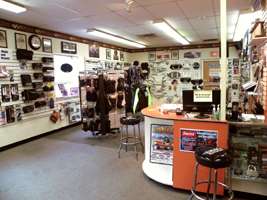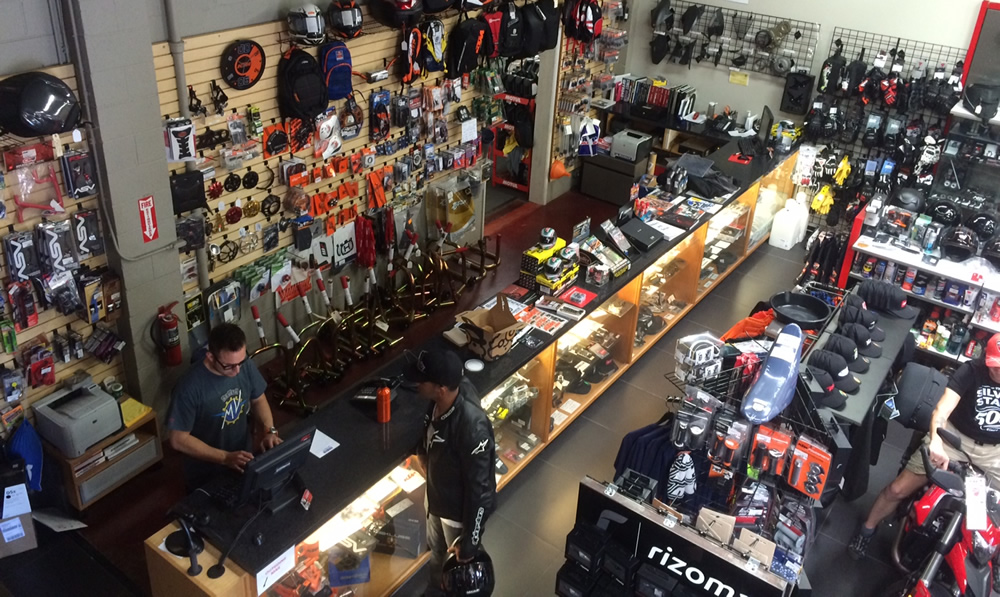Understanding the Crucial Components of a Bike: A Comprehensive Guide for Enthusiasts
For motorcycle fanatics seeking to boost their riding experience and ensure their bikes run efficiently, understanding the crucial parts of a motorcycle is extremely important. Each aspect, from the engine's elaborate operations to the vital duty of the braking devices, not just influences performance however also security and convenience. This overview will certainly go through the basic parts that every motorcyclist should recognize with, making it possible for informed choices in both maintenance and prospective upgrades. As we start this expedition, one must ask: how does each component communicate to produce the smooth adventure every fanatic seeks?
Engine Elements

The camshaft plays an important role in regulating the timing of the engine's valves, making certain the specific opening and closing required for efficient gas and air consumption, as well as exhaust expulsion. This timing is essential to preserving optimum engine performance and performance. Additionally, the carburetor or gas injection system, relying on the motorcycle version, is liable for mixing air with gas in the correct ratio for burning.
The cooling system, either air or liquid-based, functions to maintain the engine's temperature within functional limits, stopping getting too hot and guaranteeing long life - mx parts nz. Each part, thoroughly created and incorporated, adds to the seamless operation of the engine, defining the motorcycle's power output and total efficiency
Transmission System
Important to the motorbike's capability, the transmission system makes sure reliable power transfer from the engine to the wheels. This system makes up a number of crucial components, including the clutch, transmission, and final drive, each playing an essential function in equating the engine's power into motion. The clutch, normally operated by a hand lever, serves to disengage the engine and engage from the transmission, permitting smooth equipment adjustments and regulated velocity.
The gearbox, usually referred to as the transmission appropriate, includes a set of gears that bikers can manually shift through to adjust the bike's rate and torque result. These equipments are set up in a sequence that enables the bike to accelerate smoothly and maintain optimum engine efficiency across different rates. Most motorcycles make use of a consecutive gearbox, needing the motorcyclist to shift equipments in an established order.
Braking Mechanisms
While understanding the transmission system is key to using a motorbike's power, similarly essential is the ability to regulate and stop that power efficiently, which is where stopping devices come into play. Brakes are crucial for safety and performance, giving the rider with the necessary control to browse different terrains and conditions. Typically, motorcycles include two kinds of stopping systems: disc brakes and drum brakes.
Disc brakes are a lot more widespread in modern-day bikes due to their premium efficiency. They contain a brake disc, caliper, and pads. When triggered, the caliper squeezes the brake pads versus the spinning disc, converting kinetic power right into warm, thereby reducing the wheel. This system supplies better warmth dissipation, consistent performance, and enhanced quiting power, particularly in damp conditions.
Conversely, drum brakes, though much less usual, are still found in some motorbikes. They work by pressing brake footwear versus the internal surface area of a drum affixed to the wheel. While typically less reliable in heat dissipation and quiting power, drum brakes are simpler and much more cost-effective.
Recognizing these braking systems' subtleties permits bikers to preserve their bikes correctly and appreciate the engineering that ensures secure and reliable stopping.
Suspension and Guiding
Suspension and guiding systems are vital components that significantly affect a bike's handling and adventure convenience. The shock absorber, including forks at the front and shock absorbers at the rear, absorbs roadway abnormalities, improving stability and control. Front forks, inverted or usually telescopic, compress and rebound to alleviate influences, while back shock absorbers preserve tire call with the road, vital for grip and safety and security.
Steering, focused around the handlebars, attaches the biker to the bike's directional control. The guiding head bearings make certain smooth procedure, permitting specific maneuverability. Proper alignment and upkeep of these bearings are important for foreseeable steering response and reducing biker tiredness.
The suspension's adjustability is one more crucial aspect; preload, damping, and rebound settings enable personalization to motorcycle parts shop fit various riding designs and conditions. This versatility is vital for maximizing efficiency, whether navigating urban roads or taking on sturdy tracks. Developments like electronic shock absorber offer real-time adjustments, boosting adventure top quality across diverse surfaces.

Electric Solutions
After ensuring a smooth and controlled trip via efficient suspension and guiding systems, attention turns to the electric systems, a pivotal element of modern motorbikes. These systems play a crucial function not just Look At This in starting the engine but additionally in powering various elements that improve the functionality and security of the bike.
At the heart of a motorcycle's electrical system is the battery, which shops electric energy required for beginning the engine and powering supporting systems - motorcycle parts nz. The generator or generator, paired with the rectifier-regulator, makes certain the battery remains charged while the motorbike functions, transforming power into electrical power and keeping voltage degrees
The ignition system, another crucial element, is in charge of firing up the air-fuel blend in the engine's cyndrical tubes. Modern bikes often use a digital ignition system, using better performance and integrity contrasted to traditional systems.
Lighting systems, including headlights, tail lights, and indicators, are likewise crucial, making sure presence and safety for the motorcyclist. Additional electronic components such as sensing units, control devices, and shows add to innovative attributes like fuel injection management, anti-lock stopping systems (ABDOMINAL MUSCLE), and electronic control panels, additionally improving the riding experience.
Final Thought
A detailed comprehension of a motorcycle's crucial parts, consisting of the engine, transmission system, braking mechanisms, suspension, guiding, and electrical systems, is essential for fanatics intending to optimize convenience, performance, and security. Mastery of these components enables educated decisions pertaining to maintenance and upgrades, inevitably enhancing the riding experience. By incorporating this knowledge, cyclists can ensure their bikes operate at peak performance and dependability, thereby maximizing both pleasure and long life view it now of their cars.
For bike fanatics looking to elevate their riding experience and guarantee their bikes run efficiently, understanding the essential components of a motorcycle is extremely important.Integral to the bike's performance, the transmission system makes certain reliable power transfer from the engine to the wheels.While understanding the transmission system is vital to taking advantage of a motorcycle's power, equally essential is the capability to regulate and quit that power effectively, which is where braking systems come into play. Commonly, motorcycles feature two types of braking systems: disc brakes and drum brakes.
A complete understanding of a bike's essential components, including the engine, transmission system, braking mechanisms, suspension, steering, and electrical systems, is important for fanatics intending to maximize efficiency, safety and security, and convenience.